CO2 aquarium systems- how to start the Hi-Tech approach?
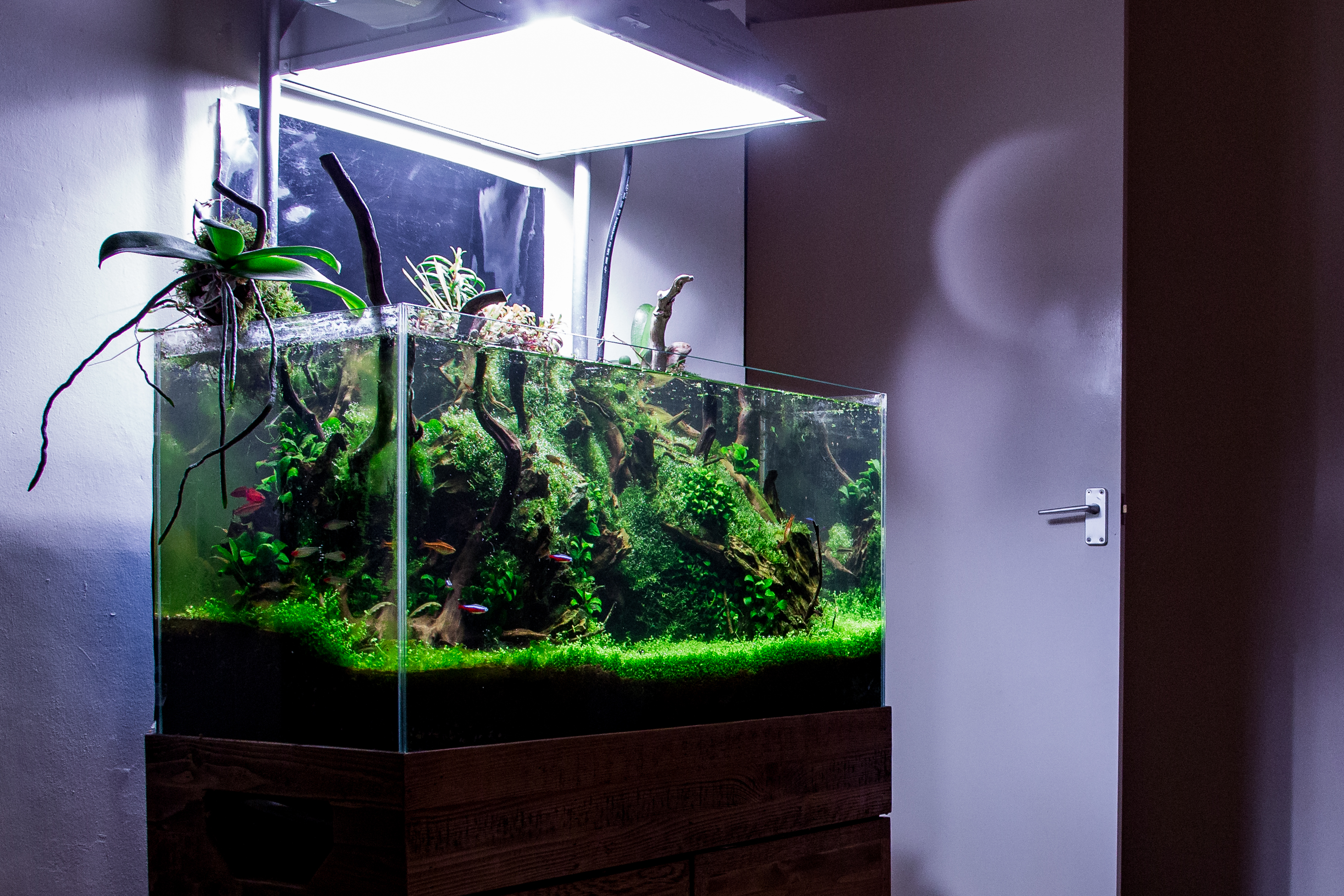
Many hobbyists have to make this key decision: whether to stay on the Low-Tech site or upgrade their setups with Hi-Tech equipment. Both ways of running a planted aquarium are doable although CO2 supplementation surely helps to achieve better results. Let's have a look why and how CO2 Systems changed planted aquariums of so many successful aquascapers!
Why is carbon dioxide so beneficial for planted tanks?
As the freshwater aquarium is a closed ecosystem, providing fish and plants with natural conditions is extremely important, especially that in our times, access to knowledge and technology is so easy.
Photosynthesis
Firstly, we need to know that plants produce plant food thanks to photosynthesis- they absorb CO2 present in atmosphere and accompanied by lighting, they produce sugar needed for their cells growth. Oxygen is the by-product of this process.
In case of aquatic plants, they absorb CO2 present in natural reservoirs where the CO2 concentration is much higher than in home conditions. Why? Carbon dioxide comes from underwater deposits of this gas and readily dissolves in the water thanks to the natural current. Despite the fact that in wild, the concentration of CO2 in water often exceeds its concentration in the atmosphere, the availability of this gas for aquatic plants is limited. This is because the gas diffusion rate in water is 10,000 times lower than in the air, and although the concentration of CO2 in many rivers and streams is larger than in the atmosphere, slow diffusion of this gas reduces the growth rate of aquatic plants.
Nevertheless, the amount of CO2 present in the tank water is very low compared to natural reservoirs. Some plants can survive in such conditions while many plants need carbon dioxide fertilization to grow at all. These are usually plants requiring low lighting.
Growth rate
Here we won't probably surprise anyone. The more food plants produce, the faster they grow. When we provide them with balanced amount of nutrients, light and CO2, they will be able to build the cells faster.
Colouration
Apart from the growth rate, carbon dioxide is definitely beneficial in terms of aquarium plants vivid colouration.
How to start the journey with CO2?
Hi-Tech site of aquarium hobby makes more questions than you may think. Let's analyze which type of aquarium system is the best one and how it works in practice.
We have a few options to choose:
-liquid CO2
-yeast CO2 system
-pressurized CO2 system
From the above, the pressurized CO2 system is the safest and the most efficient option. We need to remember that CO2 in large concentration is lethal for the livestock so responsible dosing is more than important. The pressurized CO2 system is equipped with a regulator, keeping the CO2 level constant.
Let's gather the equipment!
To set up the pressurized CO2 system, you will need the right gear and accessories allowing to connect everything together safely. Our pro-tip: rely on trustworthy brands. Among so many equipment in aquarium trade, the quality differs a looooot. And there is nothing worse than gassing the livestock! Therefore in this case it's better to invest in high quality gear which will serve you for years of use without any tragedies. Below we present a list of the devices and accessories that will be necessary to start CO2 injection in your planted tank.
CO2 gas cylinder
CO2 bottle is the source of CO2 injection. Pub bottles, CO2 fire extinguisher, Sodastream, Paintball tank, Disposable Bottle or cylinders from any industrial gas company will all work. The cylinders are equipped with a standard specification valve assembly mounted to the neck of the cylinder, to which the CO2 regulator can be connected. Specialist type bottles, such as paint gun bottles require an adapter.
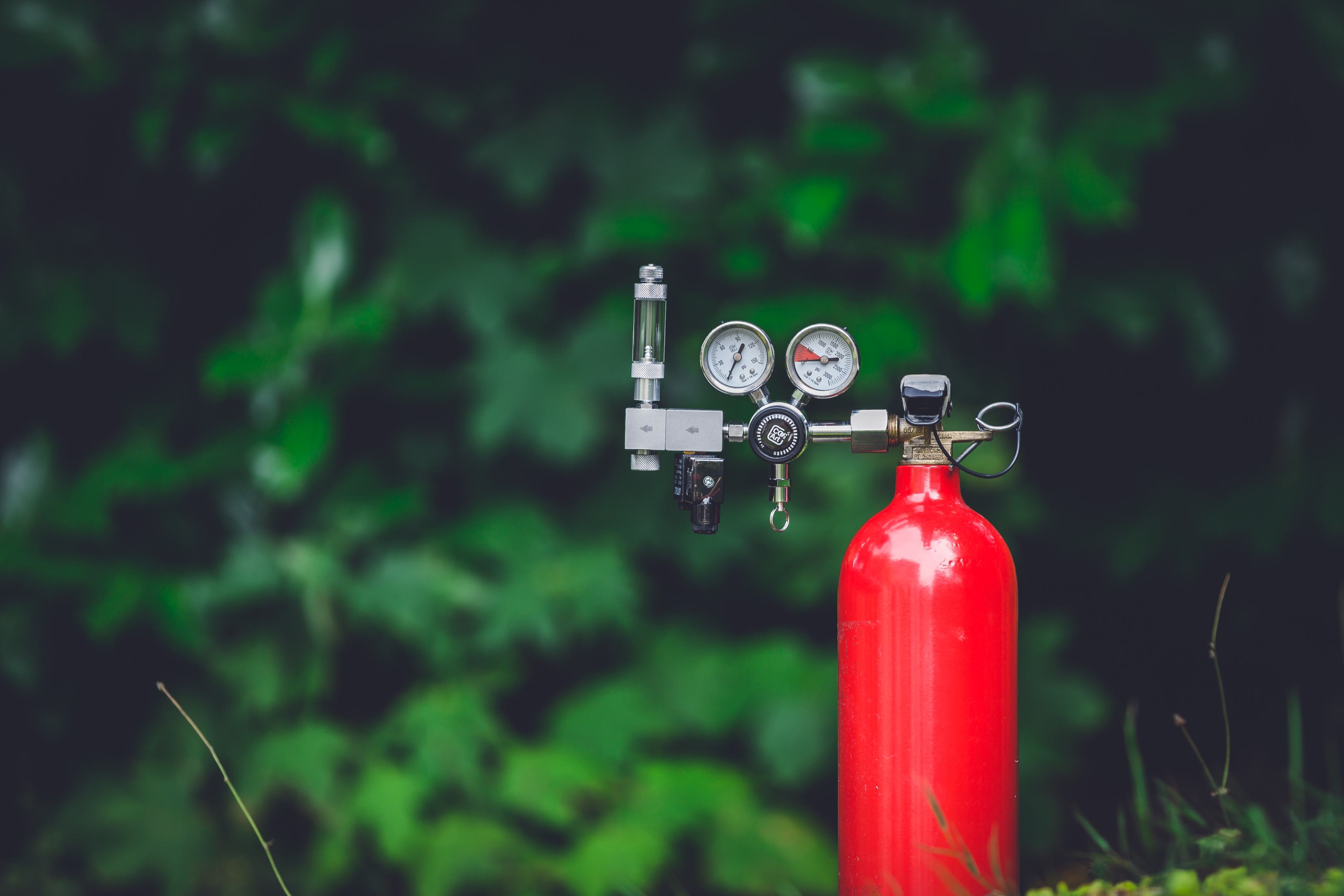
CO2 regulator
The CO2 regulator should have two gauges. One gauge of the CO2 regulator shows the remaining (pressure) content of the cylinder and the other gauge shows the pressure being output to the tank. It's worth underlining that the regulator should be dual stage to prevent end-tank-dump and in consequence- massive livestock death.
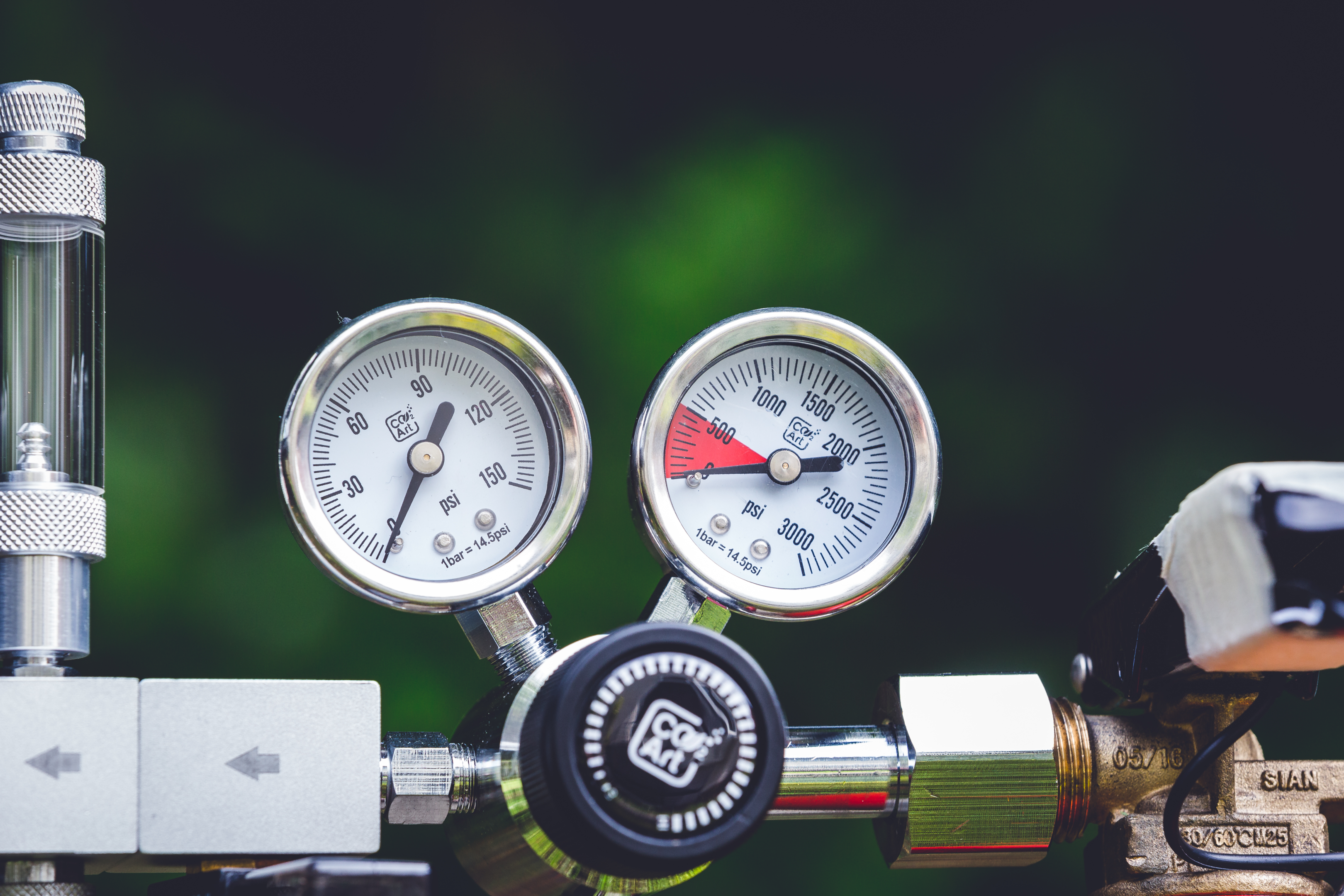
Solenoid valve
The solenoid attached to the regulator assembly allows automatic turning on and off of the gas. This is optional, however, it does solve many problems when used with a timer. This option is also extremely helpful when the electricity is cut off during our absence. Then the CO2 injection stops along with filtration, keeping your live stock alive and not gassed.
Needle valve
The needle valve allows to control the gas flow with the finest precision. Depending on the regulator model, you can choose between single-needle valve or multiple needle valves option to control more than one diffuser with only one regulator.
Tubing
Although this accessory is very basic, it's responsible for leak-free CO2 injection. Choose only high pressure-rated tubes made of CO2 resistant materials such as Polyurethane. Avoid air line tubes which become brittle and leak CO2.
Bubble counter
This is an optional part of the equipment, but highly recommended to estimate the amount of CO2 being injected to the planted tank. All you need to do is to fill the bubble counter's chamber with water and install it on your regulator or inline (depending on the model). However the bubble counter method should be always used together with drop checker.
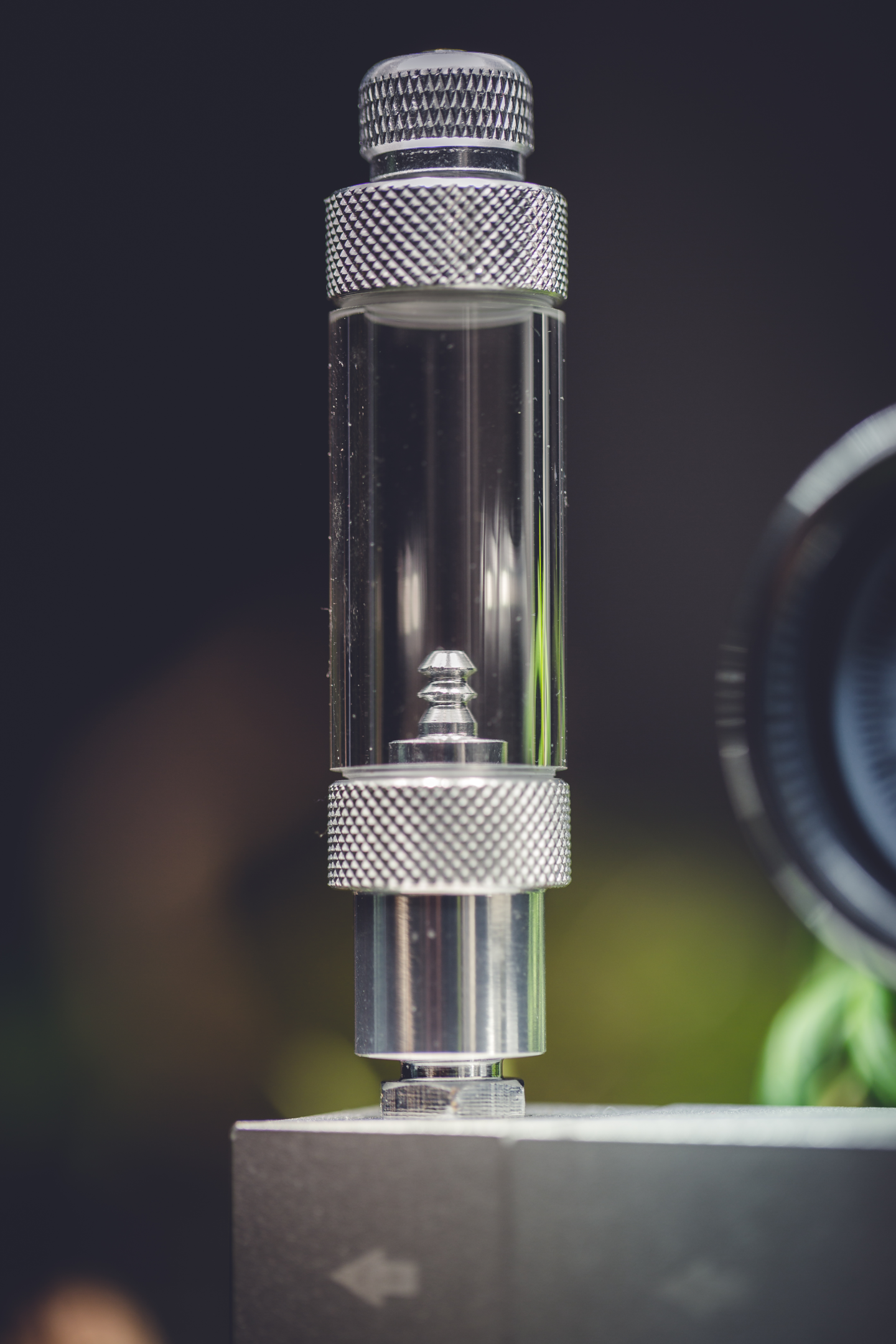
Drop checker
Drop checker is a great visual indicator of the CO2 concentration in aquarium water and probably the most common method to monitor CO2 levels. The color of the reagent in the drop checker glass shows the tank water pH level. If it's deep green, there is a right amount of CO2 in the aquarium water; blue- too less; yellowish- too much which is harmful for most of freshwater fish.
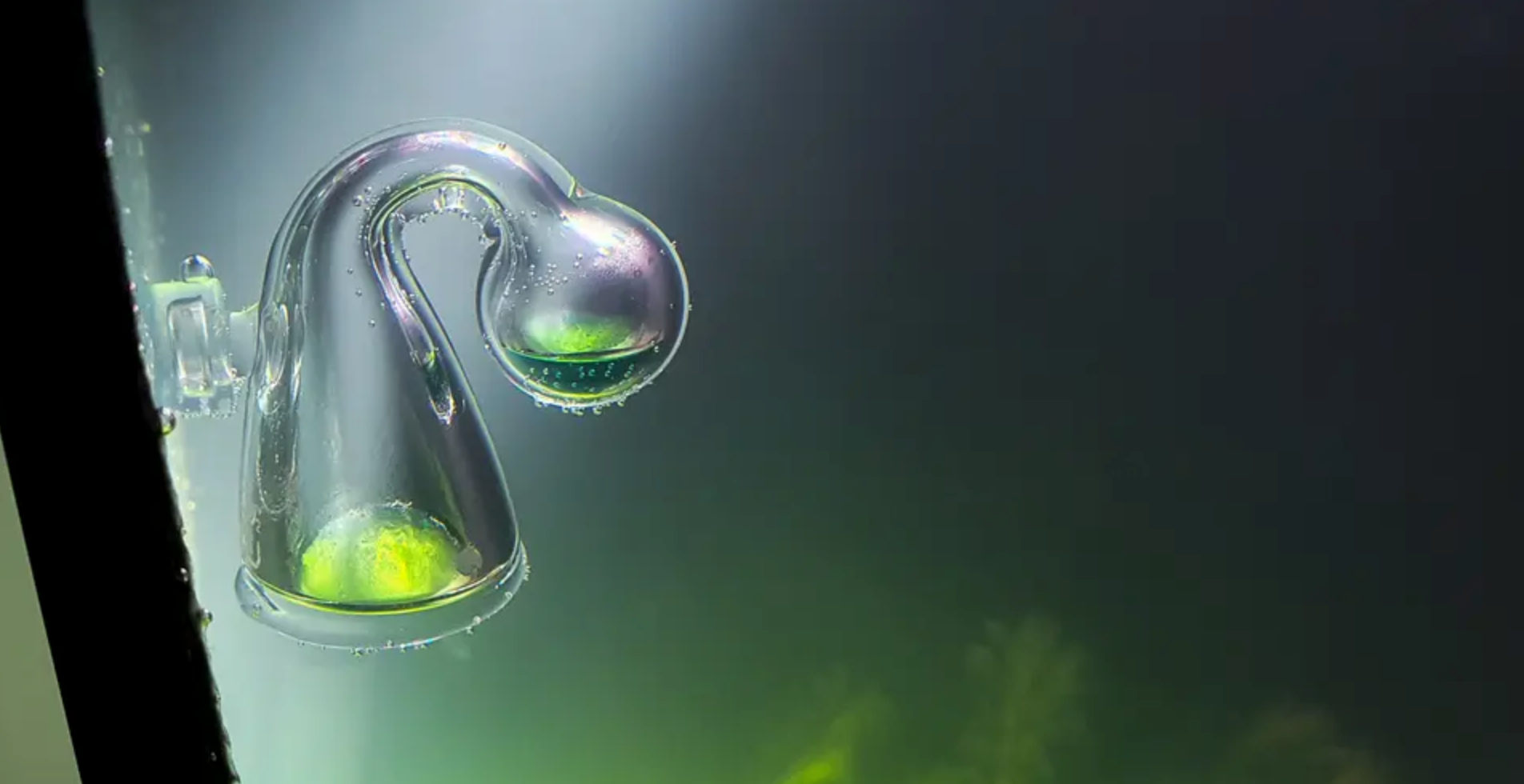
Filter outlet
This can be the elegant “Lily Pipe” or the less elegant Spraybar. These are important for distributing the filter outlet evenly across the tank. Which one is chosen is an aesthetic choice.
CO2 diffuser
It can be said that this is the last element on the CO2 line and should be selected in the right way for the size of the aquarium. CO2 diffusers can be made of glass, acrylic, other plastics or stainless steel. However their most important element is a ceramic membrane through which the CO2 is being dissolved in form of tiny bubbles.
Among the diffusers you may choose between in-line diffuser or in-tank diffuser. In-line diffusers can be run with external filtration system only as it's installed inside the canister filter. Water going through the filter is enriched with CO2 coming from the membrane in the in-line diffuser. These diffusers are usually recommended specially for tank of large volume. For smaller tanks without the external filtration in-tank diffusers are fine.
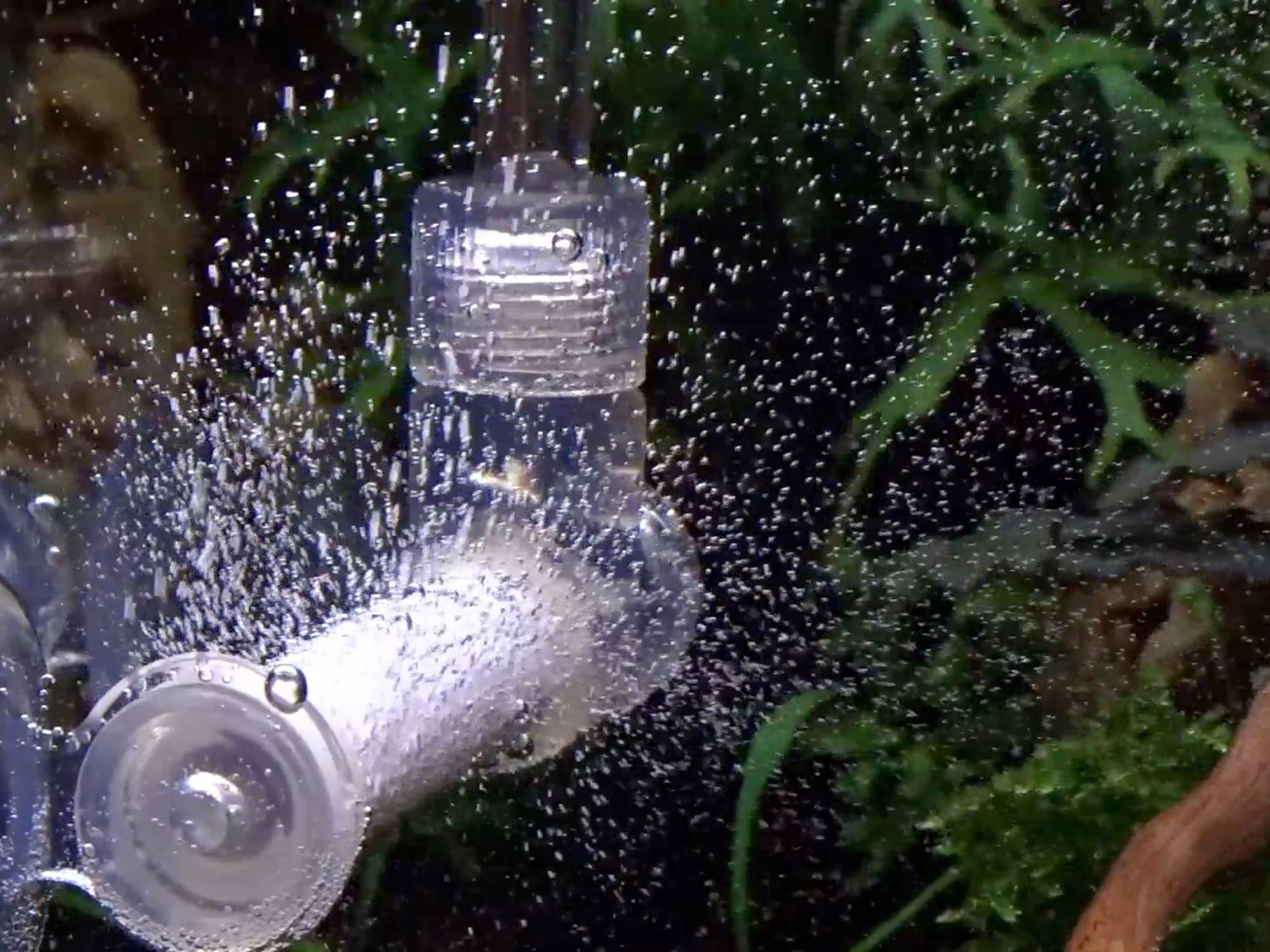
Check valve
This is another optional part of a CO2 system however very recommended. Check valve prevents water back flow and protects the expensive and fragile CO2 system from damage.
Lighting
Lighting for an aquarium is one of its key elements as it allows observers to see what is in the tank and helps aquarium plants to photosynthesize properly. It is worth mentioning here that the lighting intensity of the aquarium determines not only the visual effect, but also the maintenance, including fertilization, water changes, trimming or CO2 dosing. More details about this wide topic you can find in our article about the aquarium lights.
Although the lights are not a part of many CO2 systems, their role is essential for the balanced and healthy aquarium. Excess lighting causes unwelcome algae blooms while to less lighting with too much CO2 can cause dangerous conditions for the live stock. Therefore the light intensity should be always adjusted to our plants requirements along with CO2 supplementation and fertilizing. As mentioned above, visit our article to learn what aquarium lighting is best for your setup and how to adjust its intensity properly.
Summary
As you can see, the CO2 system requires a lot of equipment and knowledge. Thanks God that we are in times of youtube and access to plenty videos about CO2 in the aquariums that are definitely helpful to start this journey.
One thing is certain: carbon dioxide brings a great difference to any planted aquariums. Health and appearance of the aquarium plants are better than without CO2 supplementation but this should be done extremely carefully along with proper lighting and ferts. Otherwise your fish may suffer or the results will not be accurate.
Visit our online store and choose between our Complete CO2 Systems suitable for your aquarium. Our customer service is always ready to help you with the decision. Feel free to contact us any time via support@co2art.us :)
Psst! With code WELCOME10 you'll receive a 10% discount for your purchase! We deliver worldwide!



